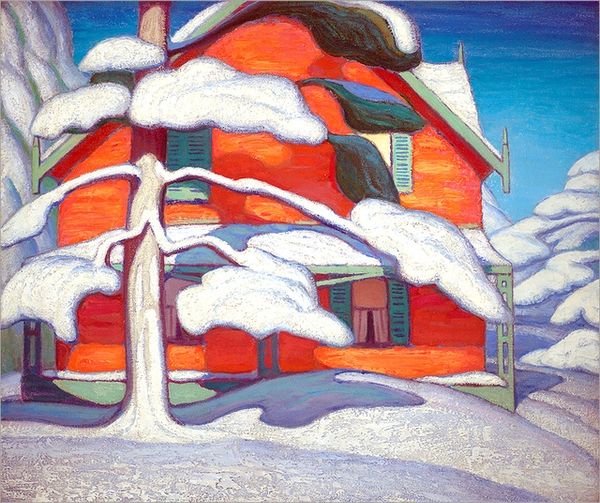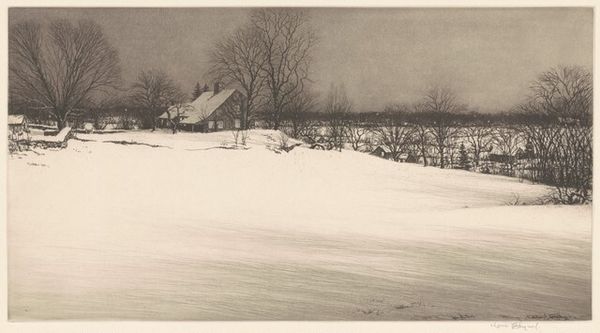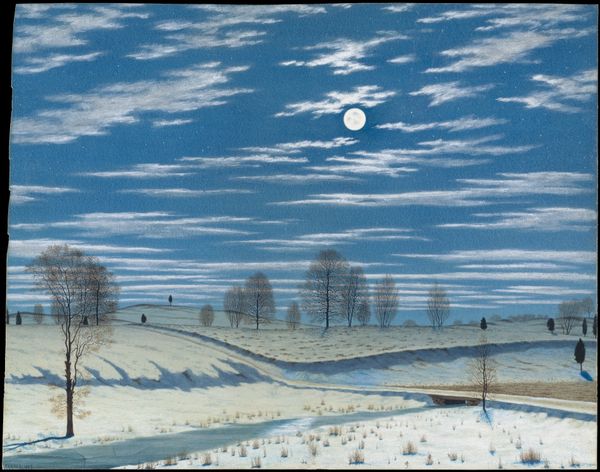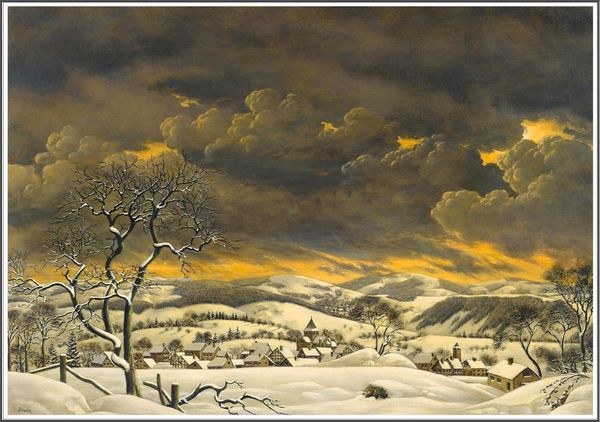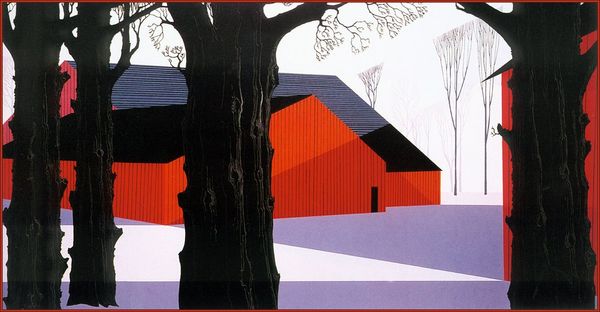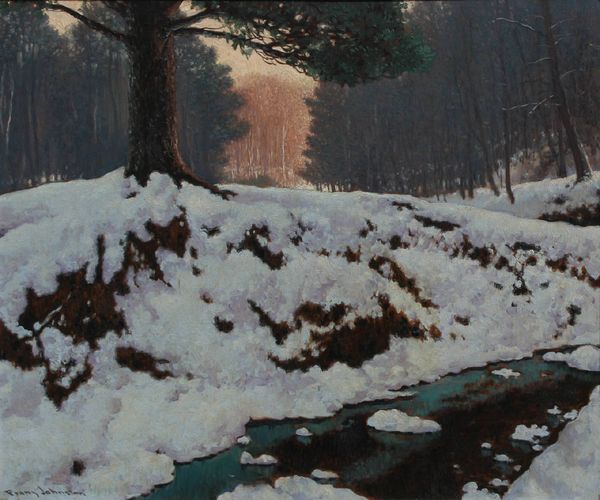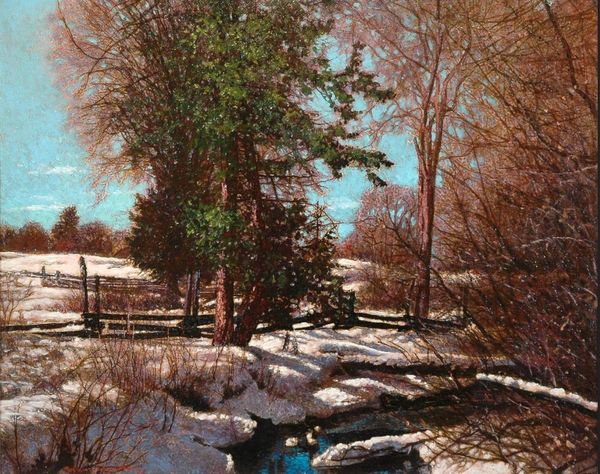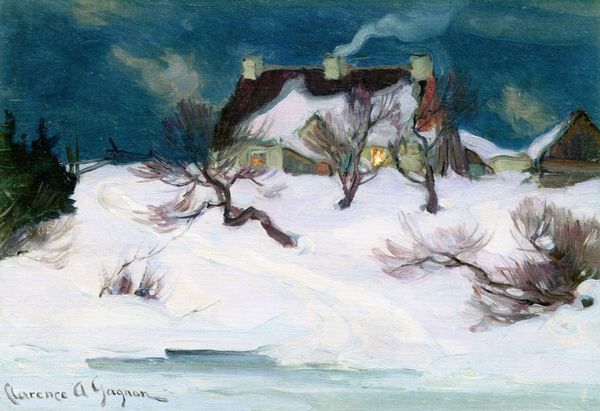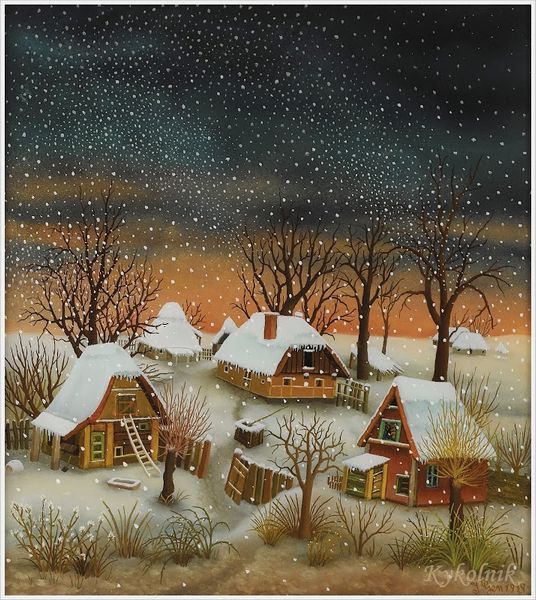
tempera, painting
#
tree
#
snow
#
sky
#
tempera
#
painting
#
landscape
#
winter
#
nature
#
plant
#
earth
#
realism
Copyright: Maxfield Parrish,Fair Use
Curator: Standing before us is Maxfield Parrish's 1949 work, "Hill Top Farm, Winter," rendered in tempera. Editor: A sort of stillness emanates from this painting, a hushed silence under a luminous sky. There’s something incredibly melancholic, even haunting, in the blue hues and the stark trees against the snow-covered ground. Curator: It's worth considering the cultural landscape of the post-war era. Parrish was creating idealized images, but this starkness you're picking up may subtly reflect a societal shift away from those romanticized visions as America grappled with new anxieties. The image’s whiteness needs to be addressed too, given midcentury ideals about homogeneity, class, and property ownership in America. Editor: Symbolically, snow often represents purity, but here it feels more like isolation, maybe even repression. The bare trees could signify dormancy or resilience depending on the cultural lens used. Did Parrish intend to create an unsettling landscape, or was he drawing from older archetypes? The light shining through the house windows seems like it represents an unquenched hope, like hearth fires going back millennia. Curator: It's tempting to view Parrish as a purely commercial artist, but engaging with his work through a critical lens reveals hidden layers of societal messaging and potential commentary on gender roles and expectations embedded within the domestic space of "Hill Top Farm." Notice the shadows of the trees as these looming, dominating fixtures: can you unpack what those represent? Editor: They create a dichotomy. Shadows are associated with fear, but also with reality, given that there are no bodies casting them. Light exists, yet there are no figures around. That combination evokes feelings of comfort and longing, or maybe nostalgia? The old trees almost guard that world on the horizon, too. Curator: Exactly, and within that world, we can consider how it positions a viewer of Parrish’s time, particularly if we account for racial and class politics. Editor: I still sense such quiet strength there, the houses huddle together. This could even invoke feelings of belonging, in tension with this feeling of haunting—a strange pairing that maybe speaks to a deeper ambiguity about place and time. Curator: Indeed, it becomes less a sentimental depiction and more of a space open for interrogating these difficult questions about mid-20th-century American ideals. Editor: The beauty, I think, is the enduring paradox present even today. Thank you for offering an expanded understanding, I never would have looked this deeply.
Comments
No comments
Be the first to comment and join the conversation on the ultimate creative platform.



